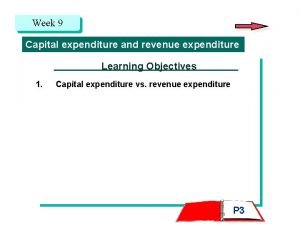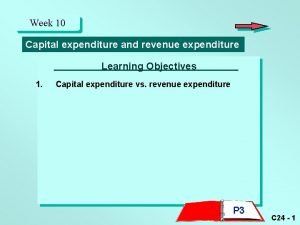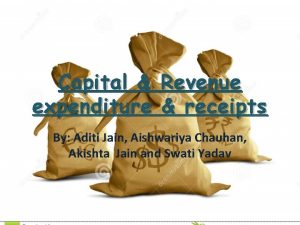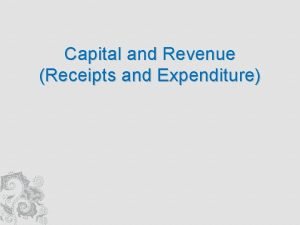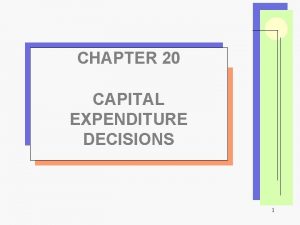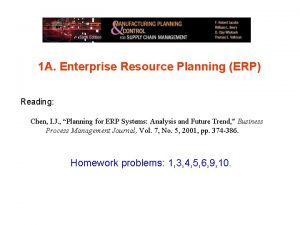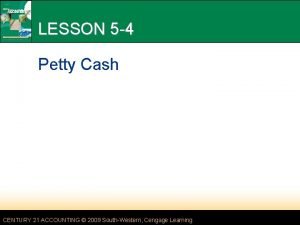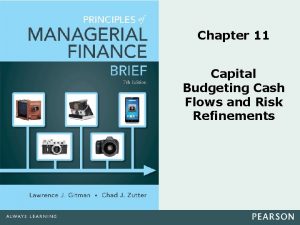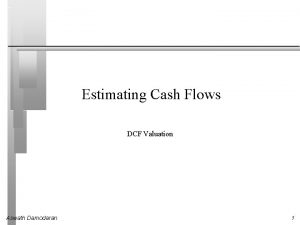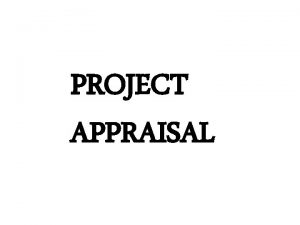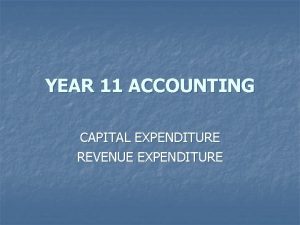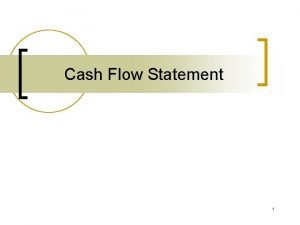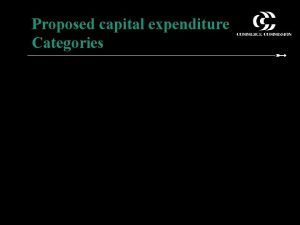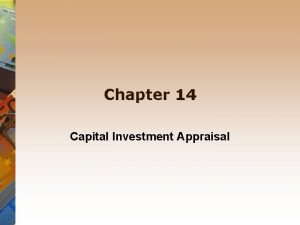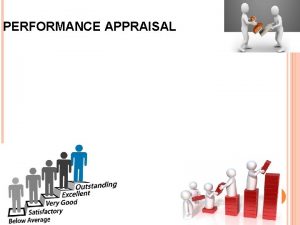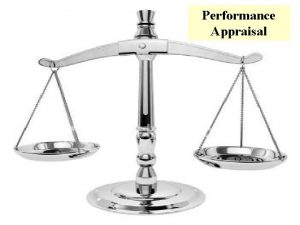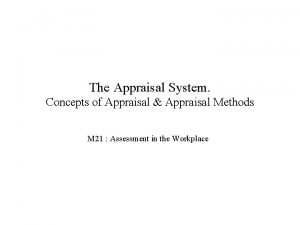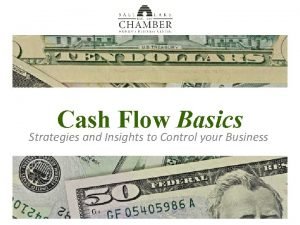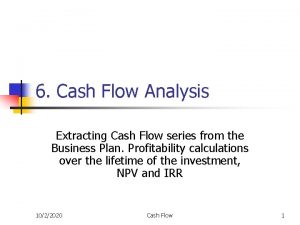Capital Expenditure Appraisal A Ward 2002 Cash Flow
























- Slides: 24

Capital Expenditure Appraisal ©A. Ward 2002 • Cash Flow - revisited • Accounting Rate of Return • Payback Period • DCF Techniques • Net Present Value • Sensitivity Analysis

Cash Flow Profile Major long-term capital investment project. Net Cash Flow Time ©A. Ward 2002

Cash Flow Profile Periodic replacement with increasing prices. Net Cash Flow Time ©A. Ward 2002

Cash Flow Profile Investment with cyclical cash flows Net Cash Flow Time ©A. Ward 2002

Capital Expenditure - Definition “Funds spent in the expectation of securing a stream of benefits, which may take some time to start flowing and which may last for some years. ” The amount spent is very often substantial. ©A. Ward 2002

Capital Expenditure - Examples ©A. Ward 2002 • Purchase of Plant or Machinery • Purchase of Land • Development of a New Product • Installation of a New Computer System • etc.

Capital Expenditure Appraisal Objectives ©A. Ward 2002 • whether a particular capital expenditure proposal is justified in terms of the expected benefits • if there alternative proposals which should be undertaken

Analysis of Options - Example ©A. Ward 2002

Accounting Rate of Return • Surplus = Cash Inflow - (Initial Investment - Residual Value) • Average Investment = (Initial Investment - Residual Value)/2 ©A. Ward 2002

Cash Inflow Stream ©A. Ward 2002 • Total net cash flow is identical • Pattern of cash inflow is different • There is less risk associated with cash received early, compared to that received later • The earlier that cash is received the quicker it can be recycled into new cash generating ventures (or used to pay-off debts) • Accounting Rate of Return ignores the time value of money.

Payback Period (Breakeven) Recognises the time value of money ©A. Ward 2002

Limitations • Accounting Rate of Return - Ignores the time value of money • Payback Period - Ignores cash after Breakeven • ©A. Ward 2002 There has to be a better way! There is!

Discounted Cash Flow (DCF) • Basic Principle is that the value of money changes with time. Example : £ 100 invested at 10% interest rate is worth £ 110 in 1 year, £ 121 Thus £ 100 now is worth just the same as £ 121 next year • ©A. Ward 2002 Based on Investment Criteria - ignore risk & inflation

Discounted Cash Flow (DCF) ©A. Ward 2002 • Decision : • Is it worth making a £ 100 “investment” now to generate a £ 130 of future value at the end of 2 years? • To answer we need to make a Net Present Value calculation

Net Present Value (NPV) • Given an interest rate of 10% what investment now will give a future value of £ 130 in 2 years time? ? invested now is worth ? *(1+0. 1) in 1 years time ? *(1+0. 1) becomes worth ? *(1+0. 1) in 2 years time Hence ? *(1+0. 1) = £ 130 ? = £ 107. 44 ©A. Ward 2002

Net Present Value (NPV) • In General • The Net Present Value of a return of £P in n years time with a prevailing interest rate of r% is given by: • Solve by spreadsheet or Discount Tables • Note this ignores future inflation rates. The model allows for varying interest rates per year. ©A. Ward 2002

Discount Factors ©A. Ward 2002

Net Present Value of a Cash Stream To handle a regular or periodic cash stream (in or out): ©A. Ward 2002 • Determine the periodic cash flow • Convert each cash flow to the net present value • Sum all present values to give Net Present Value of Stream

NPV Example ©A. Ward 2002

NPV Example ©A. Ward 2002

Sensitivity Analysis ©A. Ward 2002 • Capital Expenditure Proposals involve assumptions • Each Assumption can be tested • The sensitivity of the IRR or NPV can be determined for each assumption

Sensitivity Analysis - Example Consider a +/-10% change in initial cost of project ©A. Ward 2002

Sensitivity Analysis - Example Consider the effect of a year delay in sales Or 1 year delay in entire project ©A. Ward 2002

Sensitivity Analysis - Example Consider interest rate changes ©A. Ward 2002
 Capital and revenue expenditure
Capital and revenue expenditure Revenue expenditure and capital expenditure
Revenue expenditure and capital expenditure What are the examples of revenue expenditure
What are the examples of revenue expenditure Features of capital receipts
Features of capital receipts Kelsey fry technique ppt
Kelsey fry technique ppt Payback chapter 20
Payback chapter 20 Advantages of carpooling
Advantages of carpooling Capital and revenue expenditure
Capital and revenue expenditure Cash to cash cycle time
Cash to cash cycle time Cash to cash cycle time
Cash to cash cycle time Cash-in cash-out
Cash-in cash-out Direct labor budget formula
Direct labor budget formula Paid cash to establish a petty cash fund
Paid cash to establish a petty cash fund List six reasons why a bank may dishonor a check.
List six reasons why a bank may dishonor a check. Operating cycle method
Operating cycle method Capital budgeting
Capital budgeting Fcfe damodaran
Fcfe damodaran Introduction of working capital
Introduction of working capital Source of capital reserve
Source of capital reserve Multinational cost of capital and capital structure
Multinational cost of capital and capital structure Difference between capital reserve and reserve capital
Difference between capital reserve and reserve capital Basle ii
Basle ii Regulatory capital vs economic capital
Regulatory capital vs economic capital Constant vs variable capital
Constant vs variable capital Multinational cost of capital and capital structure
Multinational cost of capital and capital structure
